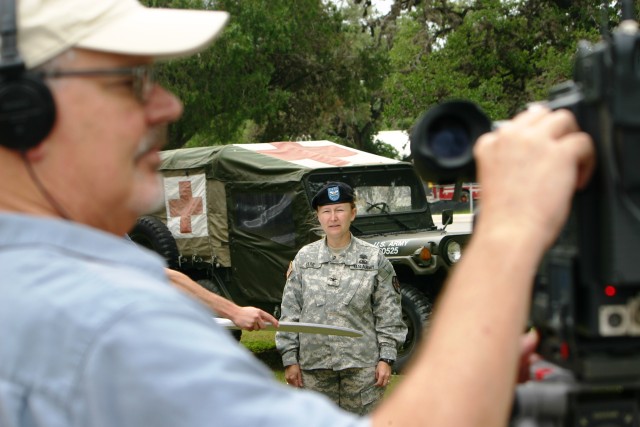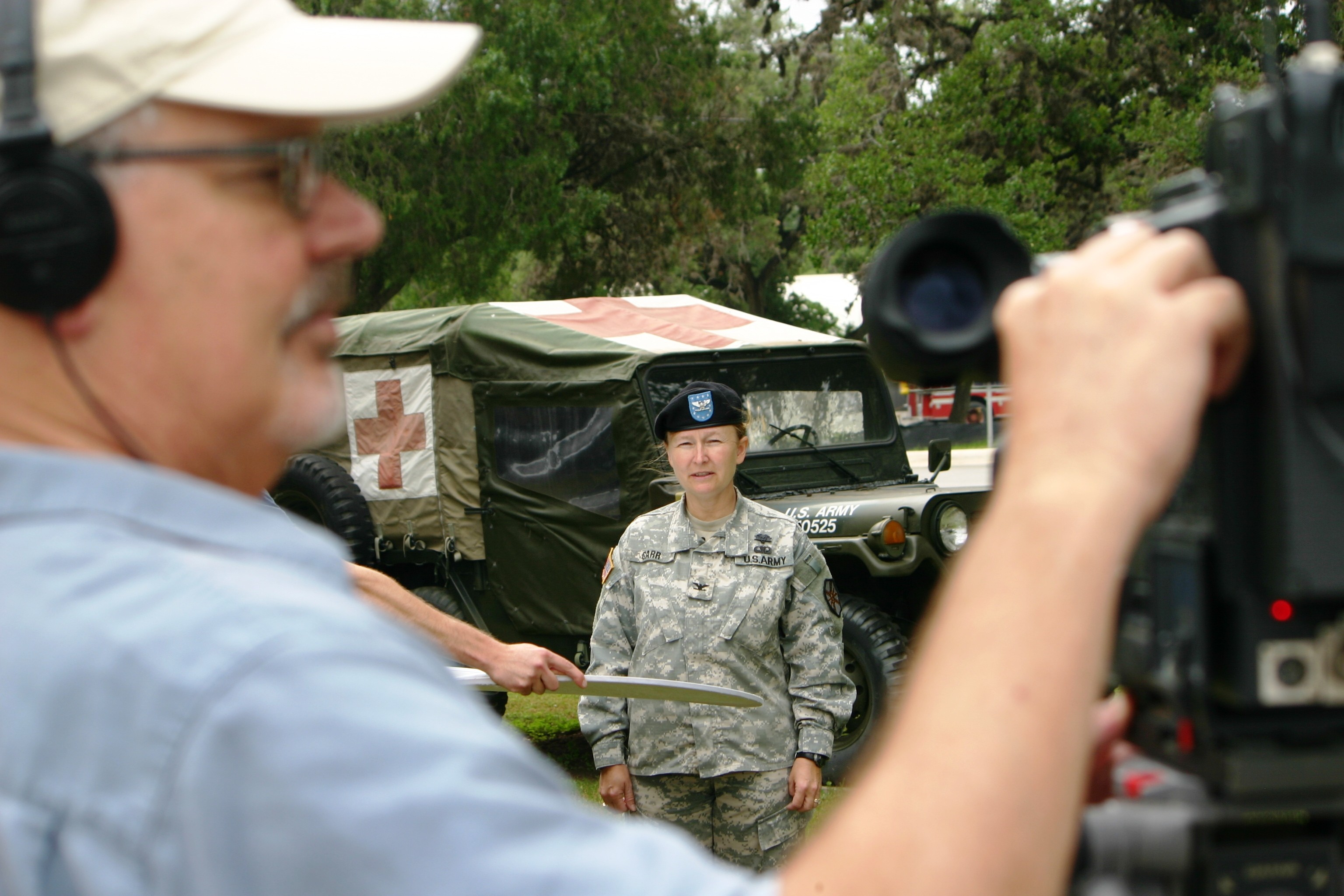FORT SAM HOUSTON, Texas -- When it comes to Camp Bullis, finding a harmonious balance between the needs of the Army and the needs of the environment has long put Fort Sam Houston leadership in a tight spot.
Add to the mix the explosive growth in development that's encroaching upon the once wide-open spaces around the 28,000-acre training area, and it can lead to potential disaster on a multitude of levels.
Located along San Antonio's northern edge, Camp Bullis was once considered to be on the outskirts of the city with few developments around it until the 1990s. Since then, San Antonio has catapulted into becoming the seventh-largest city in the United States and the third-fastest growing city in the nation.
Over the years, the task of training combat medics in Camp Bullis' realistic field conditions has also grown in size and importance and is a central feature of the Defense Department's multi-billion-dollar plan to make San Antonio the nation's center of military medicine.
While growth is good for the bottom line of the city and surrounding areas, it has rapidly closed in on this training area, which is now surrounded on all sides, save for its northern boundary. Real estate developers and homebuilders still gaze hungrily upon the pristine areas around Camp Bullis in their quest to erect even more gated communities and shopping areas.
So, when Fort Sam Houston wins a Lone Star Land Steward Award in the special recognition category from the Texas Parks and Wildlife Department, it shows the Army can have environmental responsibility live peacefully alongside growth and development.
The Lone Star Land Steward Awards program recognizes and honors private landowners for their accomplishments in habitat management and wildlife conservation.
The program is designed to educate landowners and the public and to encourage participation in habitat conservation. The awards also seek to publicize the best examples of sound natural resource management practices and promote long-term conservation of unique natural and cultural resources.
The Lone Star Land Steward Awards are sponsored by the U.S. Fish and Wildlife Service, Partners for Fish and Wildlife Program, H. Yturria Land and Cattle, Texas Wildlife Association, U.S.D.A. Natural Resources Conservation Service, Lower Colorado River Authority, Texas Farm Bureau, Texas and Southwestern Cattle Raisers Association, Texas Agricultural Land Trust and Llano Springs Ranch, Ltd.
Fort Sam Houston was recognized for managing its deer herd at Camp Bullis, assisted by the TPWD, since 1957. Management for endangered birds includes protection of more than 10,000 acres of dense old-growth woodland for the golden-cheeked warbler.
According to a TPWD press release, FSH was noted for its Karst Management Plan, which guides efficient management of both cave biology and groundwater recharge. Goals for Camp Bullis include maintaining balanced ecosystems while enhancing military training and readiness.
Innovations such as cable concrete water crossings and brush management using the low-impact "cedar eater" help conserve water and prevent erosion in sensitive areas. Camp Bullis was also recognized for supporting a wide range of natural resource research.
The award will be presented to 502nd Mission Support Group/Garrison Commander Col. Mary Garr at a ceremony at the Austin Airport Marriott South Hotel May 26. A TPWD film crew was on Camp Bullis May 10 to capture images from around the training area and also feature the colonel talking about FSH accomplishments in environmental stewardship. These will be put into a video to be shown at the awards ceremony.
"We are passionate about the missions of Fort Sam Houston and Camp Bullis," Garr told the film crew. "We're very happy to be recognized for the achievement of our environmental goals."
Since coming to Fort Sam Houston in 2008, Garr has been highly involved in negotiations to protect Camp Bullis and the environment, while ensuring the continuation of vital Defense Department training missions. The colonel was instrumental in putting together some 65 separate goals spelled out in the latest Camp Bullis Joint Land Use Study approved in June 2009.
While the Army had worked with area governments and representatives of the development community to create a JLUS for development around Camp Bullis in 1995, it went largely unheeded. By 2009, a series of related development and environmental issues threatened to derail the mission at Camp Bullis and jeopardize the city's longstanding relationship with Fort Sam Houston.
Two key provisions of the latest JLUS, the dark-sky lighting and commitment to protect endangered species which live on the land, have often come into play when new developments are planned.
Garr has repeatedly spoken out against lighting along the fast-growing Interstate 10 corridor between San Antonio and Boerne, because too much light in the night sky interferes with critical night-vision training.
"Continuing to place high density development within the three-mile light buffer could also create many light issues for military training operations conducted on Camp Bullis if dark-sky lighting is not used," Garr was quoted in a 2009 North Central News article. "Developing this tract may displace endangered species onto Camp Bullis."
Rampant development also forces some endangered species, such as the warbler, to leaves its surroundings and migrate onto Camp Bullis property, rendering it useless for training purposes. Camp Bullis is also home to four other known endangered species - another bird called the black-capped vireo, the Madla's cave meshweaver (a small, eyeless spider with reduced pigment) and two cave-dwelling beetles.
"Golden-cheeked warblers, a federally listed endangered species, have shown a 50 percent increase on Camp Bullis in the past five years," Garr wrote in a 2008 letter to the City's Office of Military Affairs and Planning and Community Development Department. About 10,000 of the 28,000 acres of Camp Bullis are habitat or potential habitat.
"We believe this is caused by the large-scale clear-cutting of oak and juniper trees within five miles of Camp Bullis. Increased warbler populations on Camp Bullis trigger further Endangered Species Act restrictions on military training," Garr said.
The colonel also worked with the Nature Conservancy of Texas to enter into a formal cooperative agreement in September 2009 to identify and protect habitat for endangered species surrounding Camp Bullis.
"This cooperative agreement is essential to allowing us to continue our Defense Department training missions at Camp Bullis," said Garr when the agreement was inked. "With The Nature Conservancy's help, we look forward to acquiring conservation easements outside of the camp that will protect habitat for endangered species and ensure a realistic environment for medical field training and tactical combat operations training for units of all branches of the United States Armed Forces."


Social Sharing